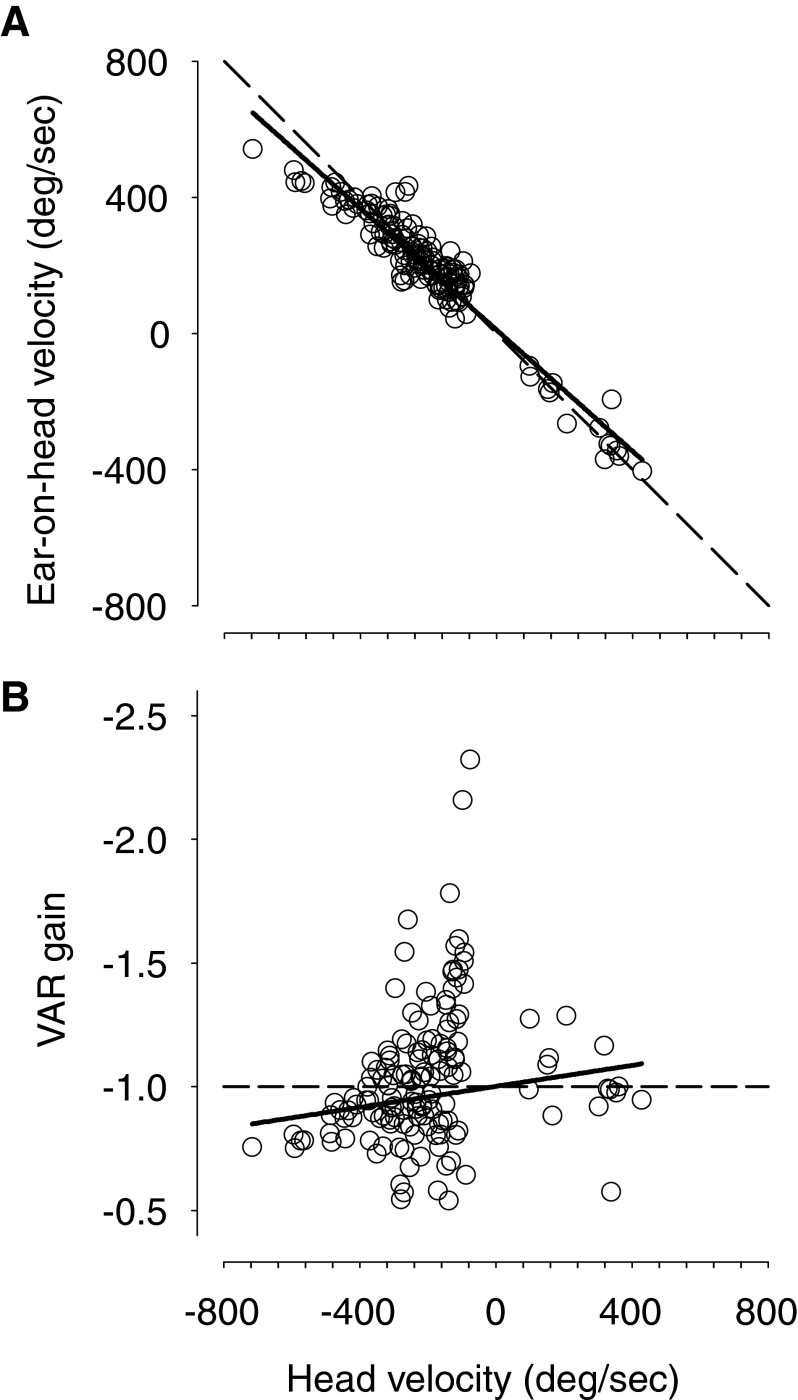FIG. 3.
A: peak ear-on-head velocity as a function of peak head velocity, which varies with target eccentricity. Regardless of the eccentricity of the target, the counter-rotation of the pinna-on-head nearly completely compensates for the ongoing head movements resulting in a stable pinna position in space (Fig. 1A). For each trial and for each target, the gain of the VAR is near −1.0. Slope of regression line (solid line) is −0.89 and correlation index is −0.94, n = 149. The theoretical VAR gain of −1.0 is shown by the dashed line. Most of the peak ear-on-head velocity values are positive because most of our measurements were made in the left ear. B: VAR gain plotted as a function of peak head velocity. The active VAR gain is largely independent of head velocity [slope of −0.0002 (deg/s)−1].

